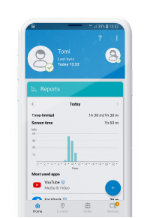Today’s children are growing up in an era where social networks play a central role. The Facebooks, Twitters, Instagrams and other social media giants of the world are now deeply embedded in the lives of both adults and children. Yet, as popular as these platforms are, they’re also home to a tremendous amount of cyberhate.
What is “cyberhate”?
Cyberhate is any form of abuse, harassment, targeting, or so-called “doxxing” that takes place online. It can be obvious and in your face, or subtle. We find examples in the comments section, most notably, but also public callouts, subtweets, and even direct messages.
So—what can youngsters do to stay away from all the haters and trolls? What tools are at their disposal and what happens when they do in fact report or block someone?
First, kids can avoid a lot of cyberhate by limiting their profile visibility to only people they’re connected with. This way, random people cannot comment, tag them, or send them direct messages. Second, strict privacy settings ensure that no one except close friends and family can find a child’s profile and view its contents. (Of course, this only works if kids maintain the integrity of their networks, which means declining friend or connection requests coming from strangers.)
How to spot fake, hate-filled, or troll accounts online
While the two steps above can help keep most toxic users at a safe distance, it can be difficult to spot potential “cyberhaters.” Many people use fake profiles or even bots to troll other people, spread disinformation, and sow chaos online. Luckily, there are a few “tells” when it comes to spotting internet trolls. Both you and your child should be aware of these:
1. Profile picture not showing their face. Trolls and haters often hide their own face to avoid digital as well as real-world consequences. Therefore, a good rule for your kid is: no face, no “friendship” on social media.
2. No common friends or acquaintances. Requests from people who don’t have any common friends or contacts with the child should also be avoided, or at least closely scrutinized.
3. Toxic past activity. Toxic social media behavior in the past is a strong indicator of fake or otherwise problematic accounts. If the requestor has posted any inappropriate comments or posts, take it as a warning sign that they should be avoided.
4. Many followers, no original activity. If the profile has a large number of followers, yet low engagement or only reposts from other pages without adding anything original, there’s a good chance it is a fake account made by a hater or troll. Also, an unexpectedly low number of posts can imply that the profile is not genuine.
How to respond to these attacks
Prevention can be a powerful tool, but what if your child has already been a target of such attacks? Understanding that online harassment is a deliberate action often coming from accounts dedicated solely to spreading hatred and chaos is the first step. If a child is being harassed online, they should first block any accounts bothering them. Emphasize that they are not to put up with this type of treatment.
This should at least stem the tide of notifications, direct messages, or tagging. If this doesn’t discourage the haters and they continue to harass a child, children (or their parents) can report malicious behavior to the social media platforms themselves. It’s anonymous, helps improve the security and comfort of all users in the digital realm, and can lead to bans and other consequences for trolls.
How to handle more serious cases of cyberhate
Online bullies can be persistent. Sometimes, the hate comes from a child’s peers, which can then spill over to in-person activities at school and on the playground. Either way, most school administrations ought to have guidelines and courses of action for incidences of cyberhate. These might include safe spaces where children can share their experiences anonymously, as well as more official avenues for parents to lodge complaints to leadership or other responsible authorities.
Ultimately, empathy and patience tend to go the furthest in dealing with cyberhate. It can be difficult for children to tell their parents about these experiences. When children trust and feel trusted, the more likely they’ll be to alert parents to cyberhate that might have otherwise flown under the radar. As always, open communication that goes both ways between you and your child is key.


